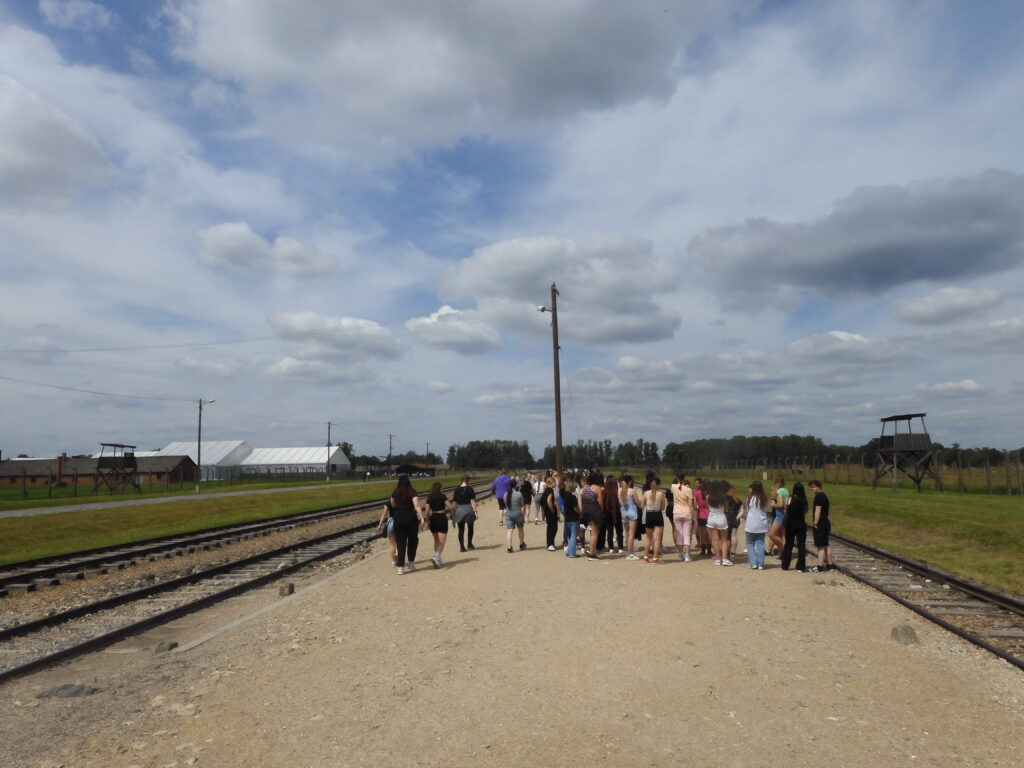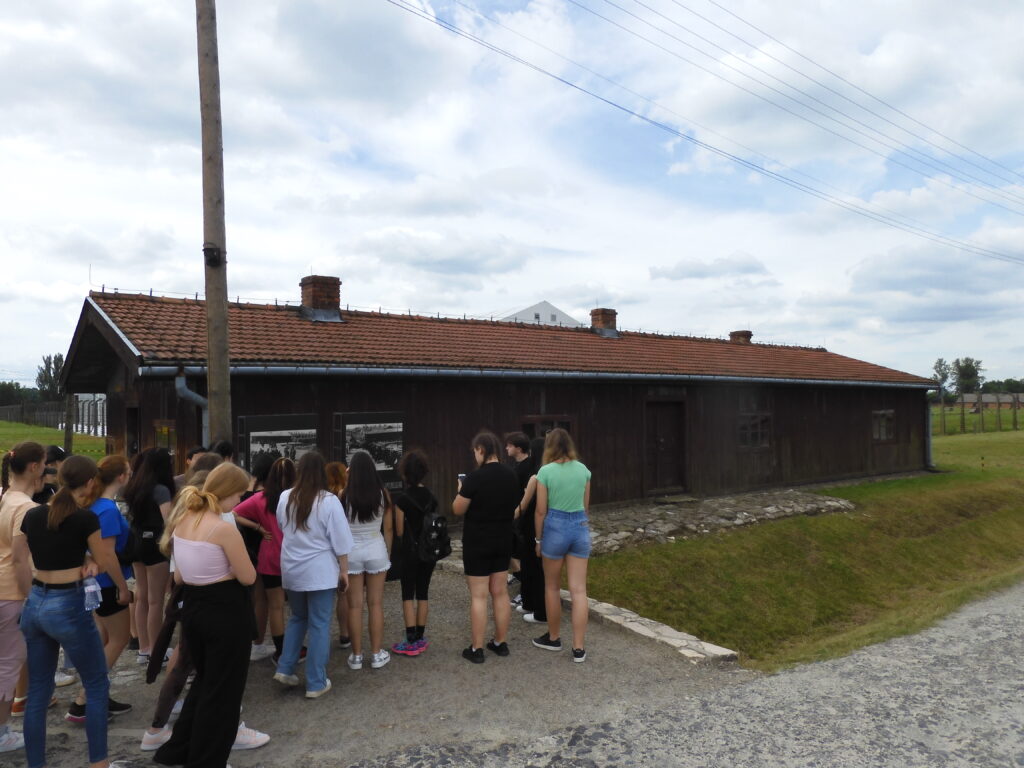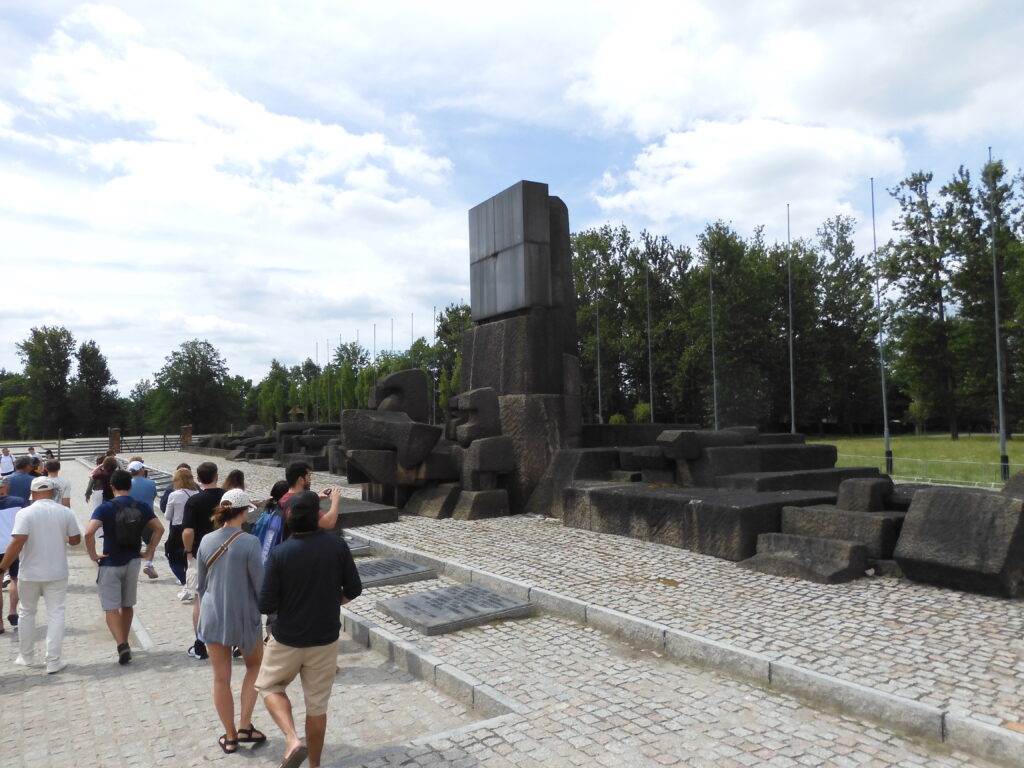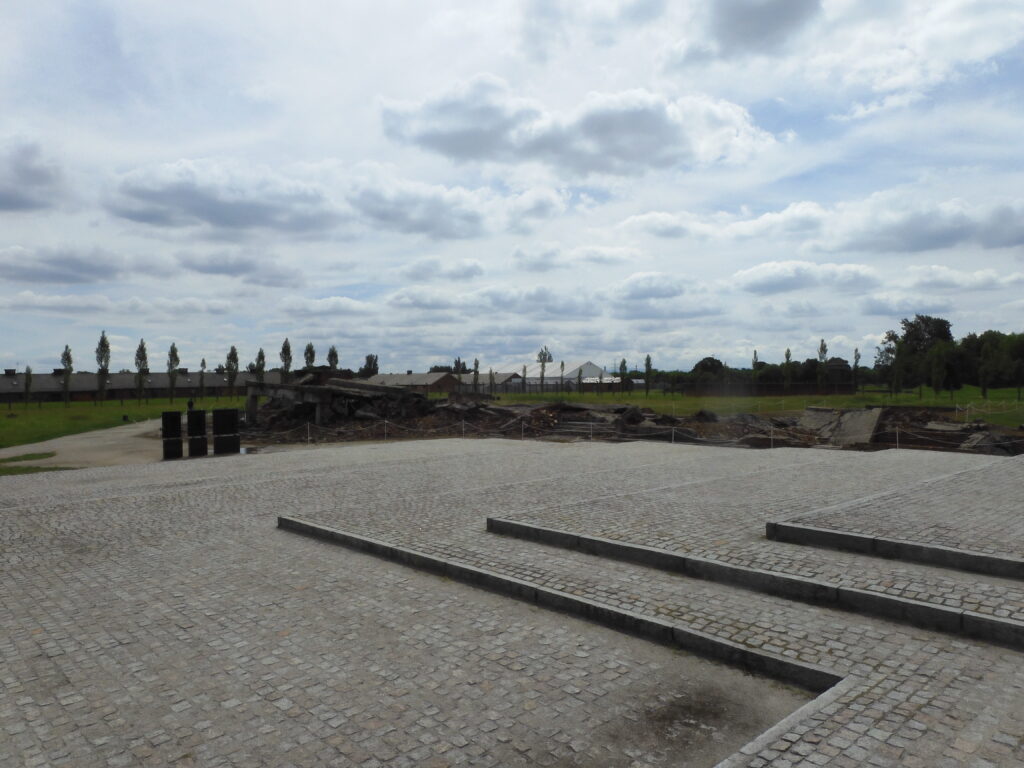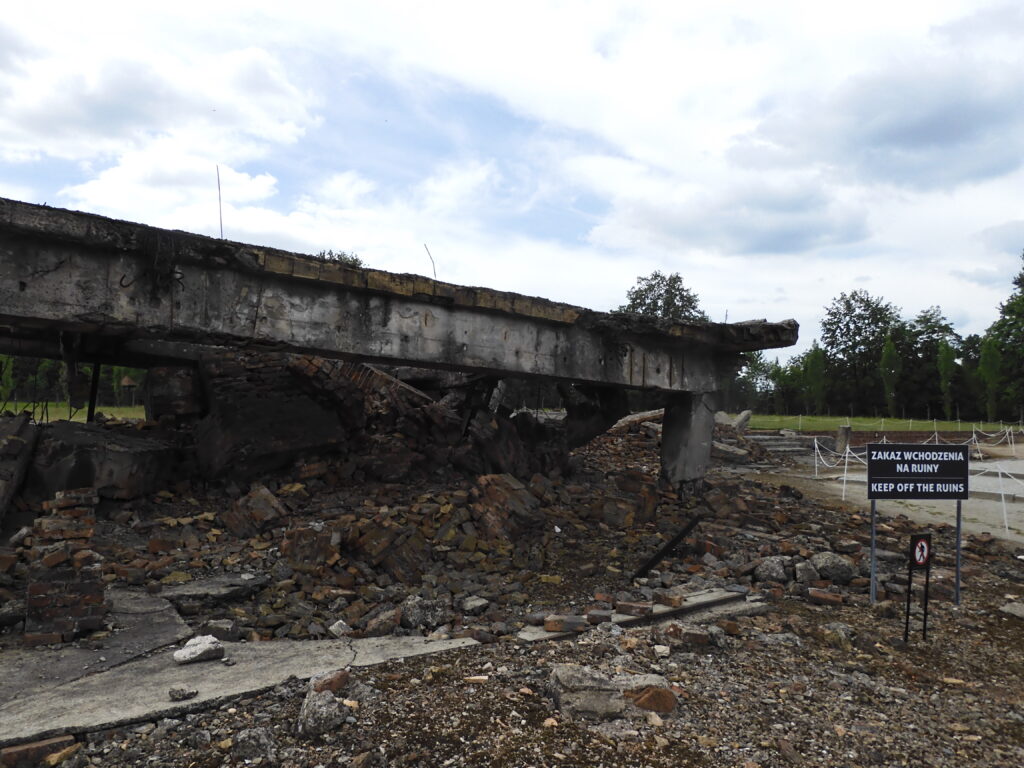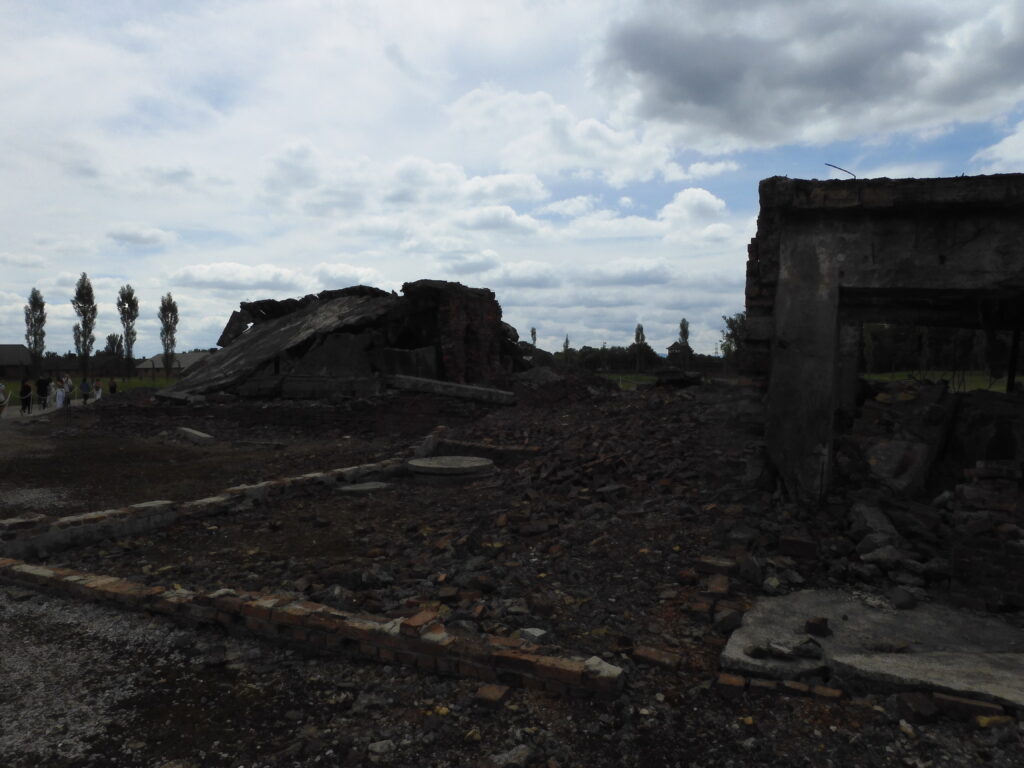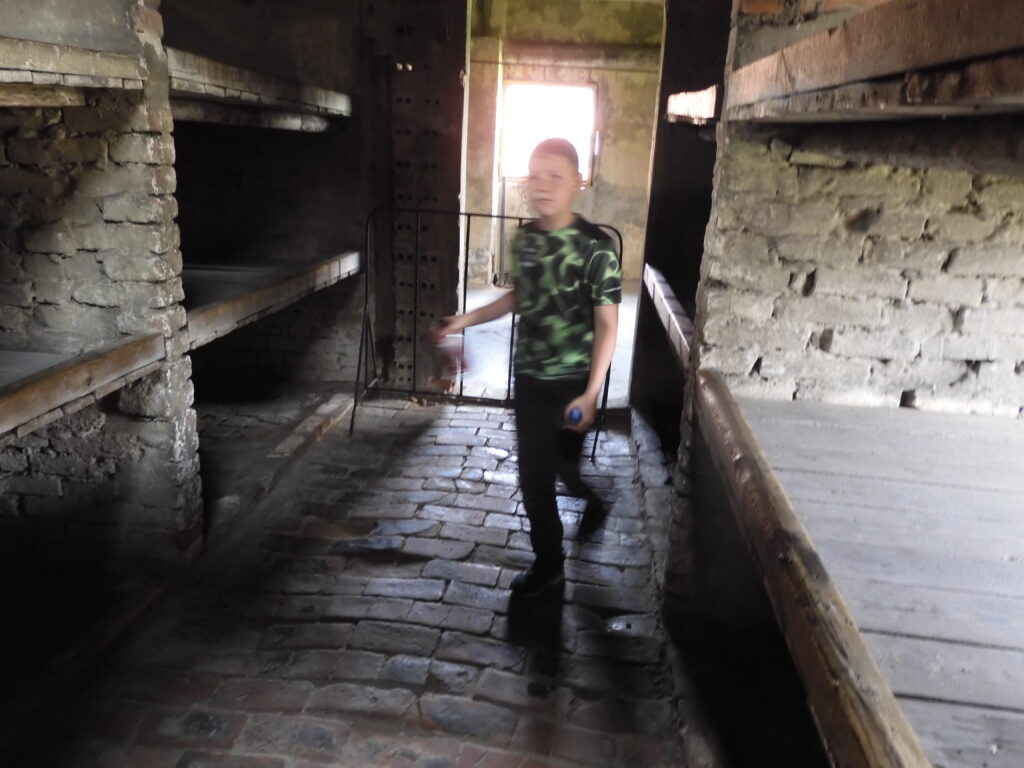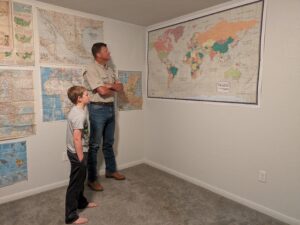Poland
Wrestling With the Weight of Auschwitz
Several times on this trip, Caleb has shared with passers by the overall structure of our around the world trip. On more than one occasion, a stubble faced twenty-something backpacker has explained to Caleb the exceptional nature of his opportunity and our trip and has essentially nominated me for their version of the father of the year award. Whatever claim to that title I may have had was probably lost by dragging an 11 year old through a tour of Auschwitz. They tell you right on their website and again when you purchase your tickets that Auschwitz visits are not recommended for children under fourteen. Retrospectively, there is probably good reason for this. I, on the other hand, felt like Caleb knew what happened at Auschwitz, at least in a general sense. He knew it was a camp created by the Nazis in order to kill a lot of Jews. He had also already been to Normandy, and seen the thousands of crosses representing the lives of American boys the ages of his older brothers who had lost their lives in the conflict to liberate Europe from the very people who perpetrated this atrocity. I thought perhaps Auschwitz might help contextualize the American sacrifices. He may have made that connection, but at a cost.
Our trip from Prague to Oswiecim, Poland was not without incident. I try to buy direct bus and train tickets when I can, to reduce the odds of language barrier connection errors. We were on a direct train from Prague bound for Krakow, another hour and a half beyond Oswiecim. At the train station, I had to identify this train to by its final destination, somewhere beyond Krakow. I had to do this from a ticket printed in German on a train board written in Czech. To complicate matters, the train station in Prague does not allow railroads to assign platforms to their trains until they are entering the station. The result is that everyone with tickets for any train must stand around watching a giant electronic board until about ten minutes before their train departs when the platform is finally flashed on the screen, at which time all of the ticket holders for that train must scurry over to that platform to get on before the train leaves. We managed to do this, but our tickets had no seat assignments, so we just got on the train and waited for everyone to sit down so we wouldn’t be taking anyone’s assigned seats.
Caleb found us two seats together across a table from a very overweight Polish fellow and his wife, who seemed none too happy to have company at first. We took special care not to impose on any of their space. They heard us being cheerful and eventually warmed to having a kid across the way. Nevertheless, Caleb started wandering the train, scouting for a better place. He does things like this when he gets bored and restless. Meanwhile, I was watching the station list, since the train would not be stopping for long at our destination. When you go to the end of the line, it’s obvious when you get off. You had better be ready to get off if your stop only lasts two minutes like ours. Caleb eventually found us an empty six seat “room” on the train. The ticket takers did not make us vacate the position, so I guess we were allowed to do this. After some time, Caleb asked if he could go to the bathroom. He sneaked the phone with him, having discovered the train had free WiFi. He sat on the pot playing games on his phone for quite a while. I did not really notice how long he was gone, because I was writing and generally relaxing. After all, we still had at least another hour and a half on the train.
By and by, along comes the ticket taker. She knows that I have tickets for Oswiecim and helpfully conveys in half Czech, half English something about only the last three cars of the train going to Oswiecim. The rest of the train – including the part I was on – was going somewhere else! I did not even know how many cars there were on the train. I didn’t know how many cars I had to move to get to one of the last three. I supposed I could just go all the way to the last car, and that would solve it. But in order to do that, I needed Caleb! I stood out in the hall to look for him. I saw other passengers clogging the ends of the cars preparing to depart. A while later, I went to the nearest two bathrooms and banged on the doors, calling Caleb’s name. No answer. One of them was empty. The train began to slow down. I had no idea how long it would take to detach train cars. For all I knew, they would just pull a pin and some of the cars would drive away. That’s how it happens in the movies.
I stood there wondering what I should do. I had all of Caleb’s things gathered together. I supposed I would just have to ride the train wherever it was going until Caleb came back. Of course, eventually he did, just a minute or two before the stop where the train was broken up. It took another ten minutes for the railway workers to detach the cars and get the train rolling again, but it was a near miss. I had been fighting Caleb’s phone game addiction most of the trip. Once again he had been in the bathroom over half an hour playing some free online game. At home, our kids don’t have their own phones. We have one phone that the kids use when one of them is traveling. Caleb sees the phone as some special treat. When other people loan him one, it’s just a video game machine to him. On the trip, I thought it best to at least let him use an old one with some communication apps on it so that if he could just find some WiFi somewhere, he could always get back in touch and we could reconnect. In this case, the phone came closer to separating us than reuniting us.
All’s well that ends well. We pulled into Oswiecim at half past four on Wednesday afternoon, the 19th of June. We had a room at a very nice guest house about a mile from the train station, but just a few hundred yards from the Auschwitz Museum. This had a shared bathroom and shower like a hostel, but the rooms were nice and we had a six bed room to ourselves. We were in town early enough to get some Polish money and stroll downtown for some Polish food. Polish food is similar to Czech. I had another mix of schnitzel, dumplings (pierogi), and a sour soup called Zurek that I really liked. It tasted a bit like Chinese Hot and Sour Soup, but had potatoes, sausage, and hard boiled eggs in it to give it a lot more substance. Caleb made a whole meal out of mushroom pierogi.
(Continued)
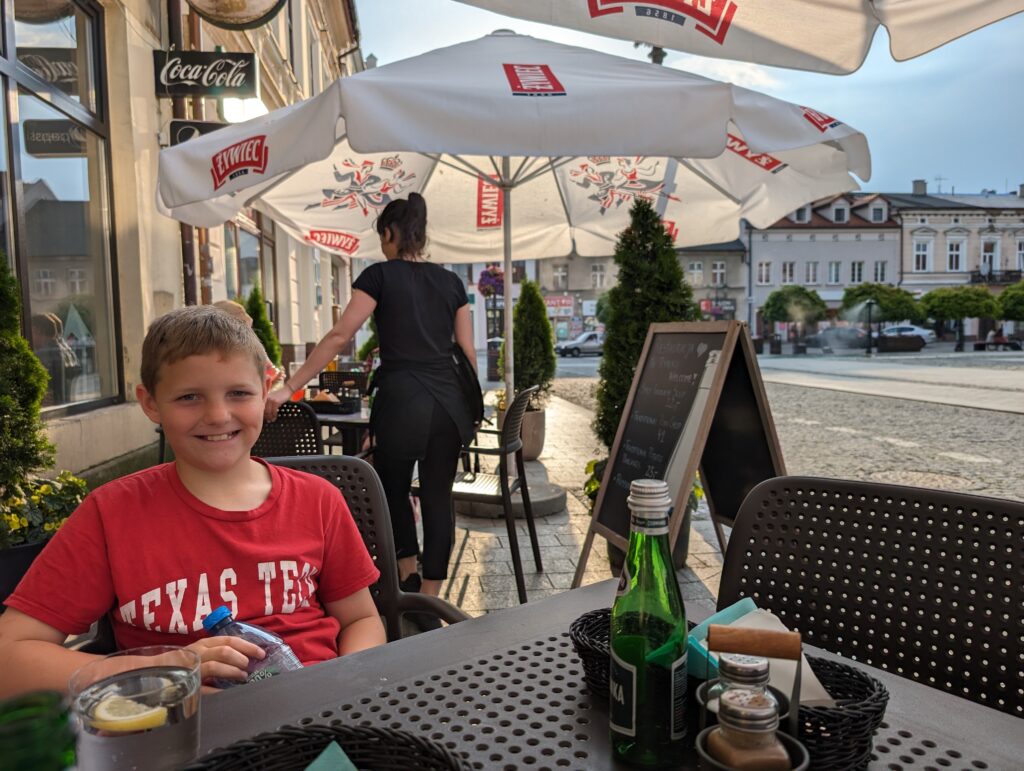

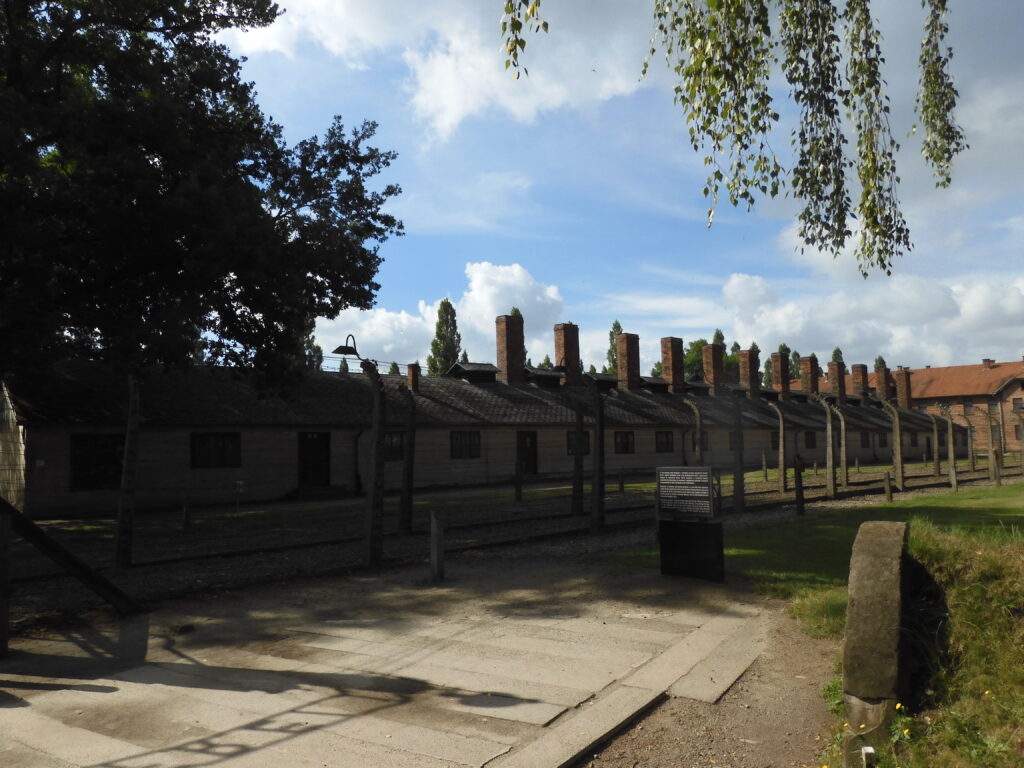
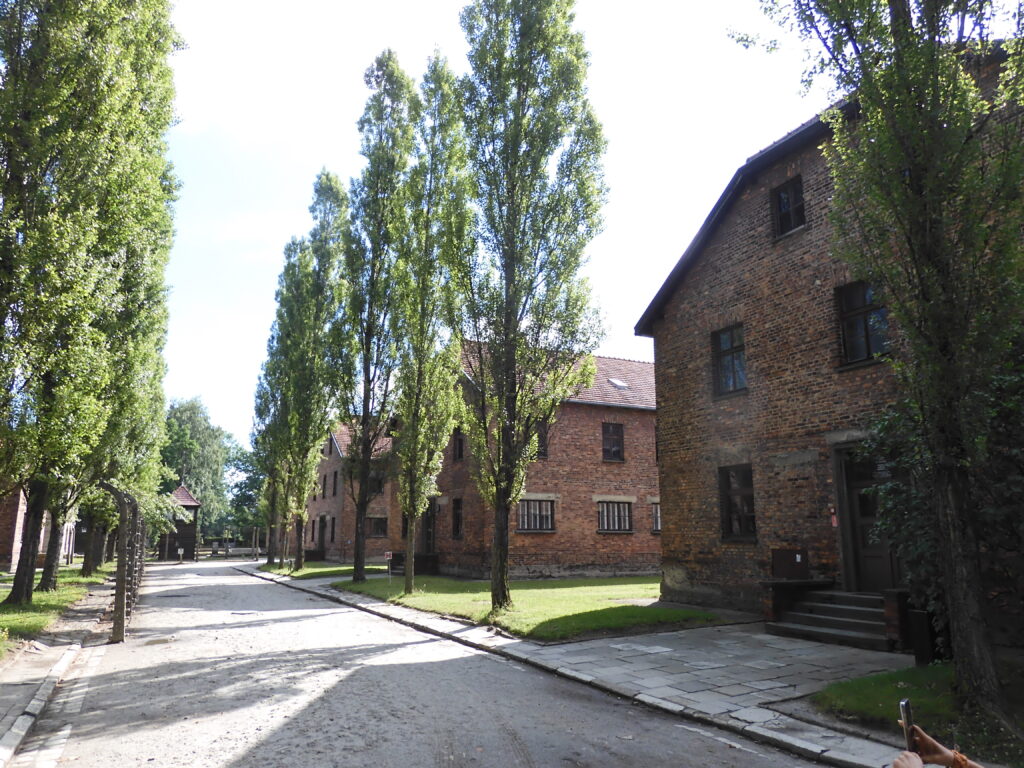
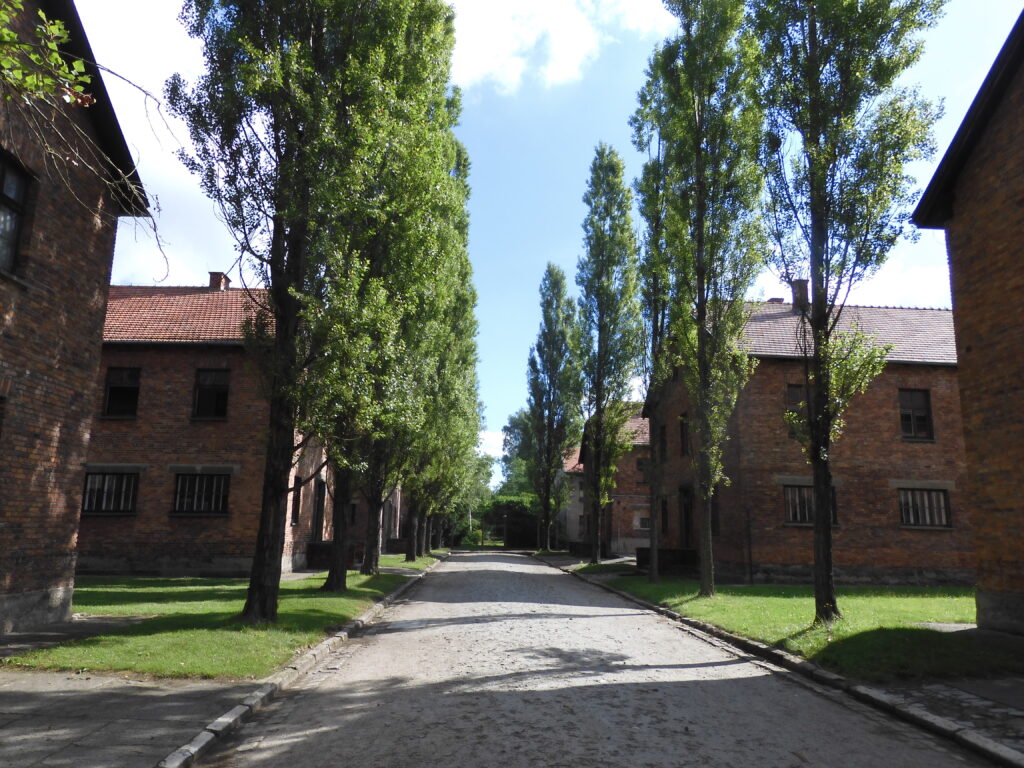
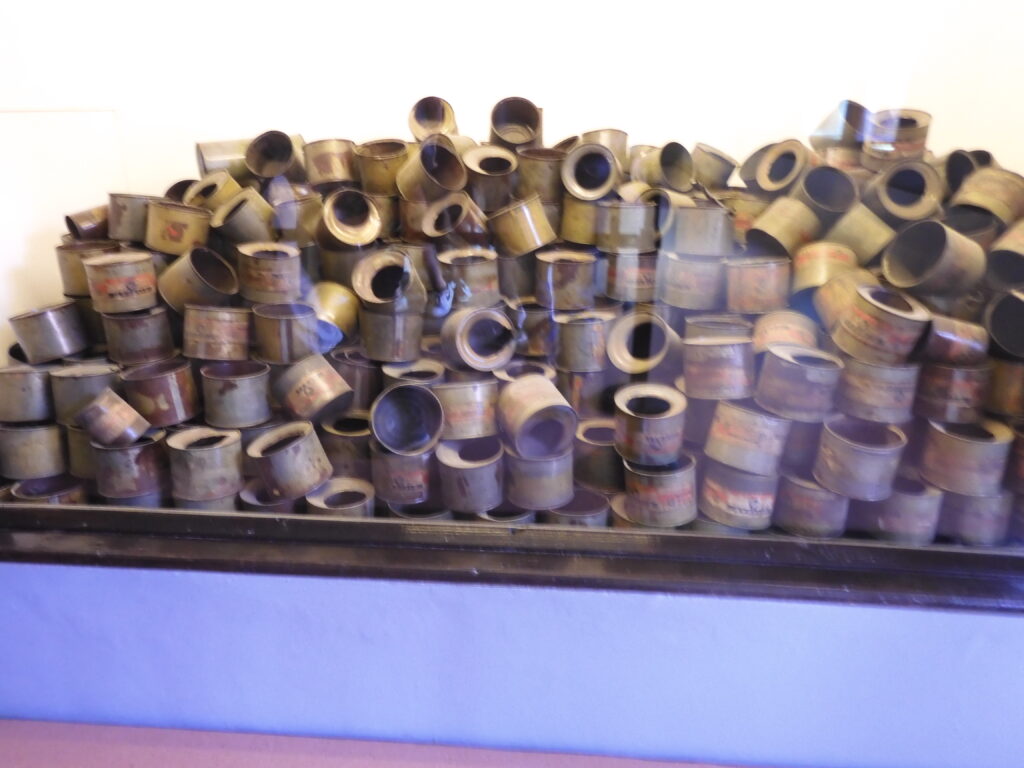
We slept well and made our way to the museum in time to stow our bags in the lockers there. We would be leaving for Slovakia a bus that picks you up right at the museum. The tour begins at Auschwitz I, the original site of the concentration camp. There is a second site a few miles away called Birkenau that is included in the tour. The Nazis could not kill Jews and other persona non grata fast enough with just the gas chamber and incinerator at Auschwitz, so they built a much bigger camp where people could be delivered via railway cattle cars, and processed directly to one of several commercial grade gas chamber/incinerator complexes or routed to the concentration camp side if they were deemed fit enough to provide some labor until they died of starvation, overwork, or some other cause. Those who were not immediately gassed still usually died within a few weeks or months.
The museum provides guided tours in the morning. You cannot enter the site in the morning unless you are on the guided tour. If you arrive in the afternoon, there are no guided tours available. Our guide spoke very rapidly, in clipped tones with a heavy Polish accent. It seemed unnecessarily rushed and curt at first. As the tour went on, I realized that first of all, there was so much to this horrific site that we had to move quickly to cover both locations in three and a half hours. Second, there was no way for a human being to convey the kind of information an Auschwitz tour guide must relate without somehow emotionally shielding yourself. This is why the delivery seemed curt and clipped. Around every corner, in every building, there was another piece of evidence showing how evil humans can be at their worst; another example of how tragic and horrifying the experience was for so many people.
Nearly all of us know that the Nazis killed millions of people – mostly Jews, but also gypsies, homosexual men, Soviet prisoners of war, and some others who ended up in places like this for one reason or another. But as Joseph Stalin purportedly once said, “One death is a tragedy, a million deaths is a statistic.” Witnessing evidence of the million separate tragedies is overwhelming. The people who arrived at Auschwitz had been told they were coming to a work camp and would continue their lives. They brought some valuables with them – prayer books, dolls, suitcases. They came with their families. The museum has a pile of suitcases that condemned people had painted their names on. There is a mountain of 40,000 shoes. Of course, this represents a tiny fraction of the shoes collected here from people about to be murdered, but even that tiny fraction is a mountain. There is a huge stack of prosthetic limbs. These people were not deemed fit to work, so they had gotten off the train and walked – unknowingly – straight to the gas chamber. There was a doctor right at the unloading point making snap life and death judgments about the fitness of those arriving at the camps. Mothers, small children, and old people were usually sent straight to the gas chamber right off the rail cars. The SS troops had them undress to “shower.” They were told to place their clothing and shoes close together so they could find them easily after the shower, but this was really just so it would be easier for the Nazis to pick them up after the victims had been murdered. They probably did not know what was happening until the canisters dropped into the “shower room,” and people started to die. The artifacts – the collected possessions of the victims – give weight to the scale of the crime and make the victims human, rather than just a tally mark on the list of German state crimes.
This part of the museum also has a collection of covertly taken pictures showing prisoners being sent right or left at the platform. There are pictures of children who Josef Mengele did experiments on. There are pictures of mothers unknowingly carrying their babies toward a gas chamber. Putting faces on the victims adds tremendous weight to the knowledge of what happened. The inhumanity just keeps piling on through the visit. The SS doctors experimented to find the most effective ways of killing seriously ill prisoners to prevent epidemics that might endanger guards or impede what work was being accomplished. They determined that just injecting phenol directly into the hearts of sick people was very effective in preventing them from infecting others. They later used this method on small children as well. There is a room filled with women’s hair that had been collected to make fabrics. The incinerators built to dispose of bodies did not get hot enough to do a respectful job of cremating the victims, so human remains – especially bones – were left. Some of the Jewish prisoners who were assigned work duty instead of immediate death were given the job of crushing the bones of their friends and family members with wooden poles so the bone residue could be sold as a fertilizer additive.
I am not sure, retrospectively, if it was a good idea to have taken Caleb to see all of this. When we were done with the first camp we were told to take a small break and catch a shuttle bus over to Birkenau. Caleb told me he didn’t want to go to the other camp. He sobbed a little. I gently hugged him and we talked some about the sacrifice of the people whose graves we had visited at Omaha Beach. I did not try to make the decision for him. I told him that I did want to go see the rest of it, and that although it was hard to witness I thought it was important for me to see how bad it had been. Ultimately, he decided he could make it through the rest of the tour. Although Birkenau is a much bigger site, and the place where the murders were done on a truly commercial scale, there are no photos here, and no piles of personal evidence. It was not as emotionally difficult as the first part for him.
They do have ruins at Birkenau. By late 1944, German lines were collapsing on every front. Once the ground froze in the winter, the Soviets started moving westward toward Berlin quickly. Once it became evident the camps would be taken, the Nazis tried to destroy them. Some pieces of equipment were salvaged for later use when they might restart their murderous operation. Otherwise, they tried to remove all traces of what they were doing. At other concentration camps, like Treblinka, once the Soviets arrived, the Nazis had so thoroughly reduced the rubble that they claimed the place had been a farm. They blew up the main buildings at Birkenau, but the Soviets got there so quickly that the rubble is all still in place. At Auschwitz I, the gas chamber and incinerator were in a hardened partially underground facility that could be used as a bunker. As such, it was not destroyed. The Germans tried to save themselves from Soviet bombing in the same facility in which they had murdered thousands of Jews. Birkenau also has the rail lines and unloading docks where the doctor stood and sent people either to work, or straight to death.
I am glad I went to see Auschwitz. I knew it would not be a fun stop, but it was even heavier than I thought it would be. I think I probably should not have taken Caleb, but he will be OK with it. I am also glad that we did not stay at Oswiecim another night. We got on a bus right at the museum and headed for Ruzomberok, Slovakia. We made one switch at Krakow, where I spent some of my last Polish Zlotys on Shawarmas. Caleb did not talk much afterward about Auschwitz. He left the room when I was telling Kirsten and Kimberly about it on the phone. I will not force him to talk about it, but I will keep looking for opportunities to help him process it if and when the subject comes up. I was unsure about my fathering decisions that day. Kids need to know that bad things happened, but Auschwitz might have been too much for an 11 year old. (Continued)

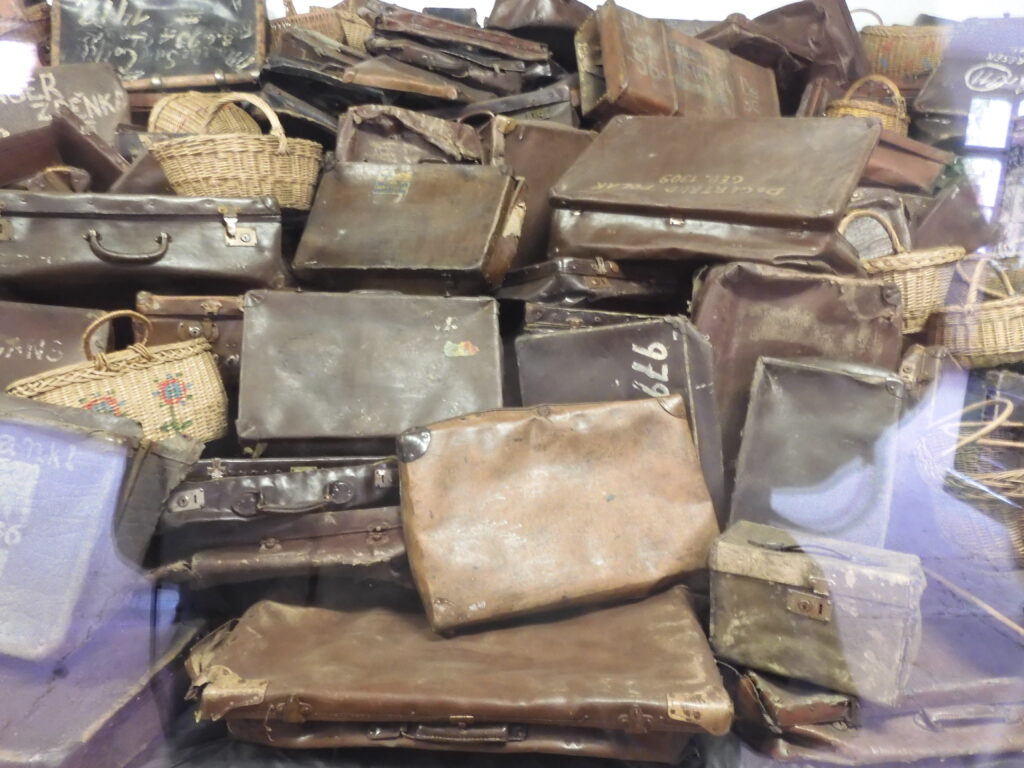

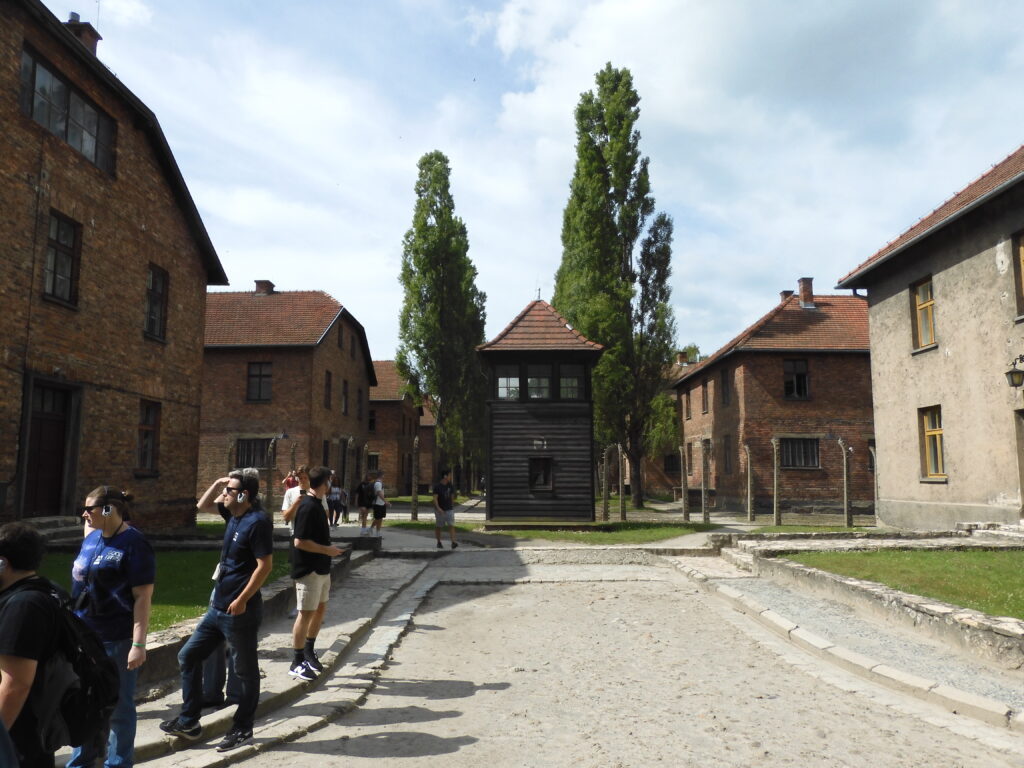
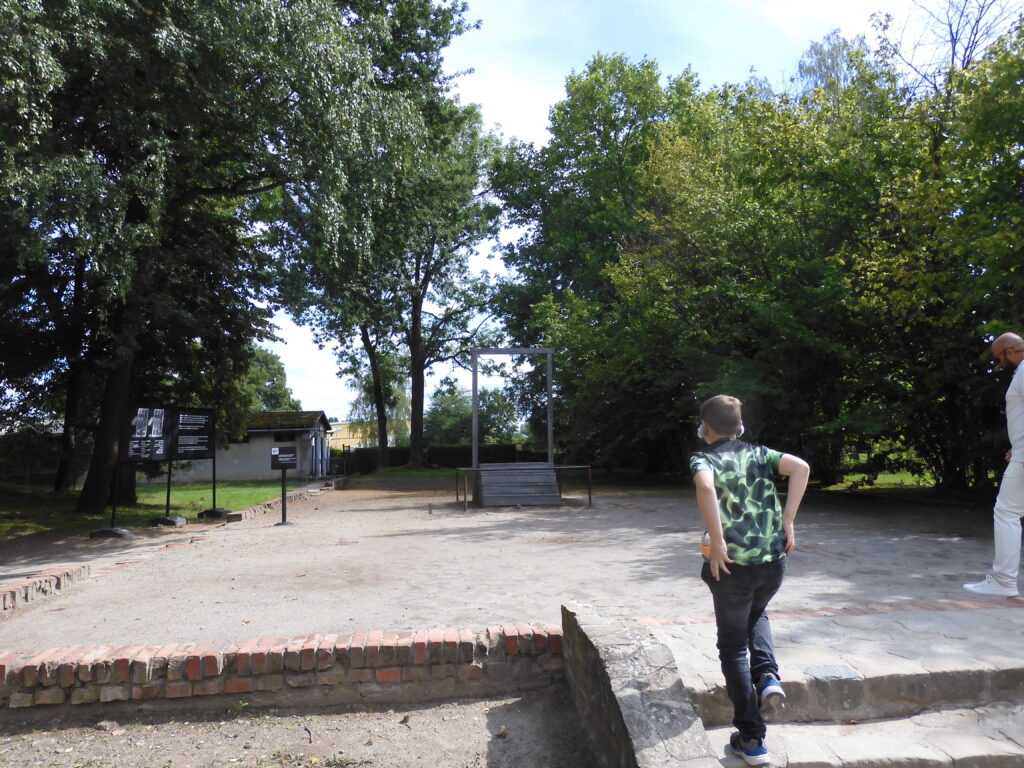

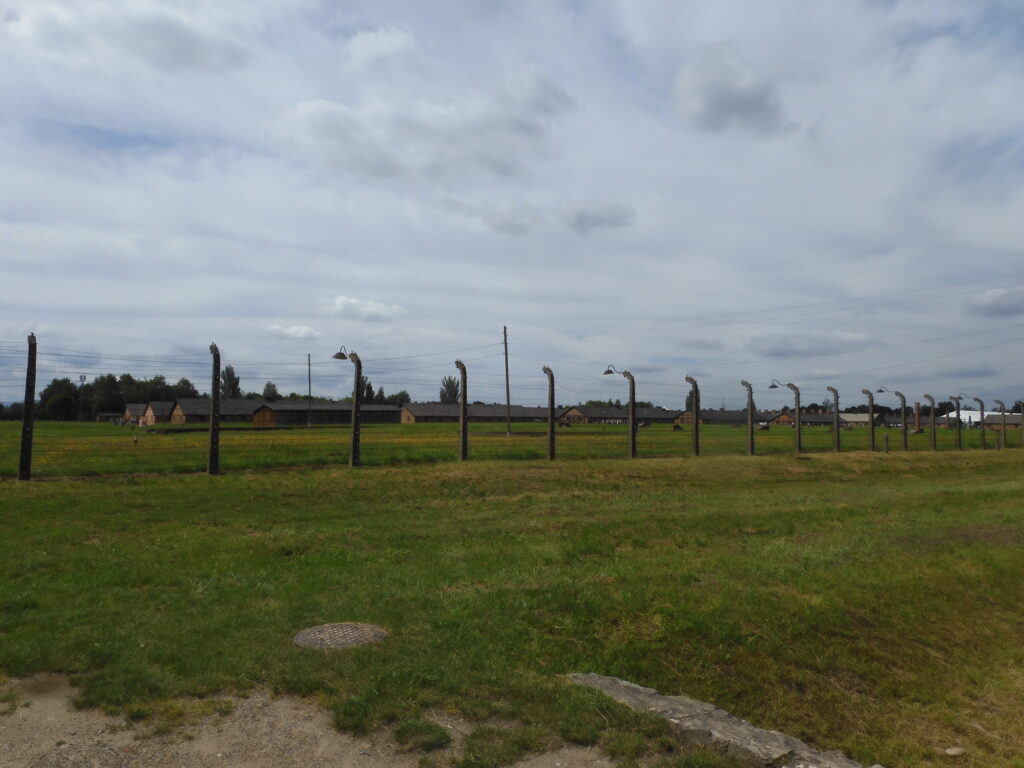

Editorial Remarks
During our tour, a short, middle aged American woman with some Jewish heritage tended to monopolize the tour guide’s time between stops. The tour involved quite a bit of walking, so there was a lot of time to monopolize. Since I always hope to hear any auxiliary information the tour guide might provide, I often edged up close to the front of the group to hear any additional information. The lady did most of the talking. At first, she was relating the stories of her relatives, many of whom had directly suffered at the hands of government pogroms in Russia or other places in Europe. Others had escaped by coming to America.
“How fortunate for some of your family members that they were able to escape to a safer place,” remarked the guide.
“Well, America isn’t everything it claims to be,” responded the tourist. “They were all forced to assimilate. America talks a big game, but they have a program of forced assimilation.”
The guide made some non-committal remark.
“America is no better than any other place in the world. We have Neo-Nazis in America.”
“That’s terrible,” the guide said, again in a sort of vague way.
“Yes, I see them walking around in their Nazi uniforms all the time. It is that way all over the United States. There are book bans happening everywhere. The state of Texas has banned The Diary of Anne Frank. Can you believe that?” the tourist went on.
Really. She said these things. I have never seen a person wearing a Nazi uniform in the United States, certainly not anyone purporting to be a Nazi. That’s not to say there might not be a few somewhere. But are we really walking around Auschwitz saying that we Americans essentially live in the same kind of place that perpetrated these crimes? Did we not send millions of boys over to combat what was going on here (even if we didn’t fully realize the extent of what was going on)? Are any of my fellow Texans aware of any state book bans on any book? That’s right. There is no such thing happening in Texas. If her claim had any basis in reality at all, she must have been referring to the single digit number of Texas public school districts that have banned a few sexually explicit books from their libraries. That’s quite a different thing, regardless of whether or not you support what the schools have done.
America is not without her flaws. We all know that. But differences are important. Words have meanings. I am not a big Donald Trump fan, but Donald Trump is not Adolf Hitler. A school removing a book from its library because it has vivid descriptions of gay sex is not the same as exterminating a few million people. I don’t know what this lady’s background or education was, but far too many well-educated people fall into the same trap. This is one of the most prominent problems in higher education today. Every evil ever perpetrated by one people on another gets labeled “genocide.”
Words have meanings. Genocide has a specific definition. It is a systematic policy of mass murder; a national extermination attempt. The Nazi government had an official policy of wiping out Jews in Europe. Ottoman policies in the early 20th century evolved into a genocidal policy against Armenians. U.S. policies of expropriating Native American lands or forcing native peoples to give up their traditional ways of life were often cruel, ineffectively administered, and even changed arbitrarily. But there was never an extermination policy. Reservations were not concentration camps. They were not and are not very nice places. They represented the forcible removal of people from their traditional homelands and ways of life, but they were never made with the intent of exterminating the inhabitants, nor did they have that effect. A thing can be bad or even evil without being the moral equivalent of another monumental evil.
I suppose in roughly the same way people will always argue whether LeBron James or Michael Jordan is the best basketball player of all time, people will always compare the evils of the world. It’s just part of human nature. There is a danger in ignoring the faults of your own country and society. That kind of thinking can lead to dangerous regimes coming to power they way they did in Germany last century. But there is also a danger in not differentiating between levels of evil, or taking into account context, or giving credit for the greater good done. Saying “America may not have always treated Indians well, but we did liberate Europe from the Nazis,” is not the same as saying, “The Nazis may have murdered six million Jews, but they built good roads.”
America is not without her flaws, but she has done a lot of good in the world. Let’s not ignore the flaws, but let’s recognize the good so we can perpetuate it. I have always argued that America is fairly unique in being a nation of ideals rather than a nation of geography, language, or ethnicity. We strive to uphold the ideologies set forth in our founding documents. Those values are important. They are good. We don’t always live up to them, but they have helped make America be, on the whole, a positive force in the world. The world needs a city on a hill. Let’s do our best to be the nation of ideals that our founders wanted it to be.
